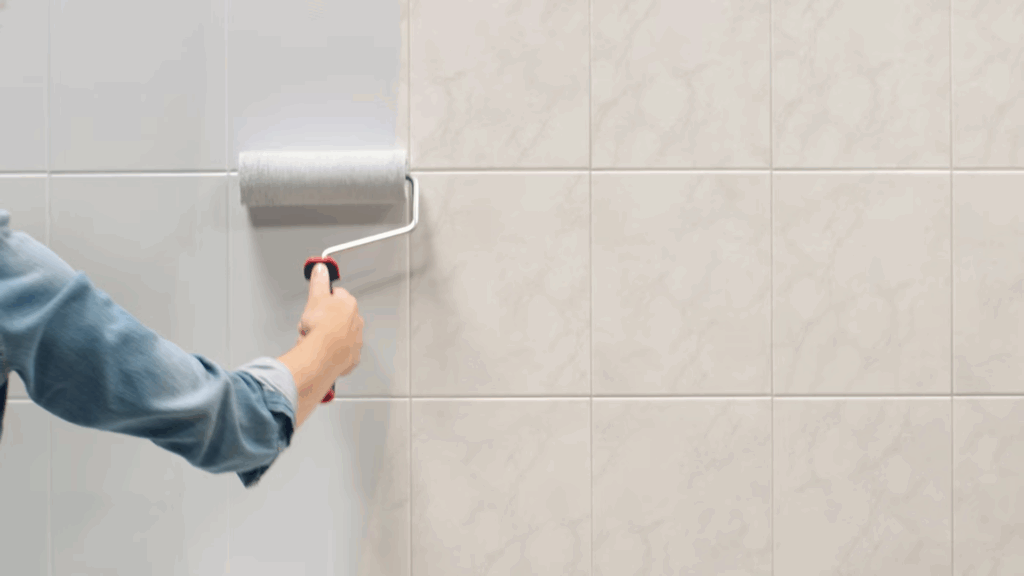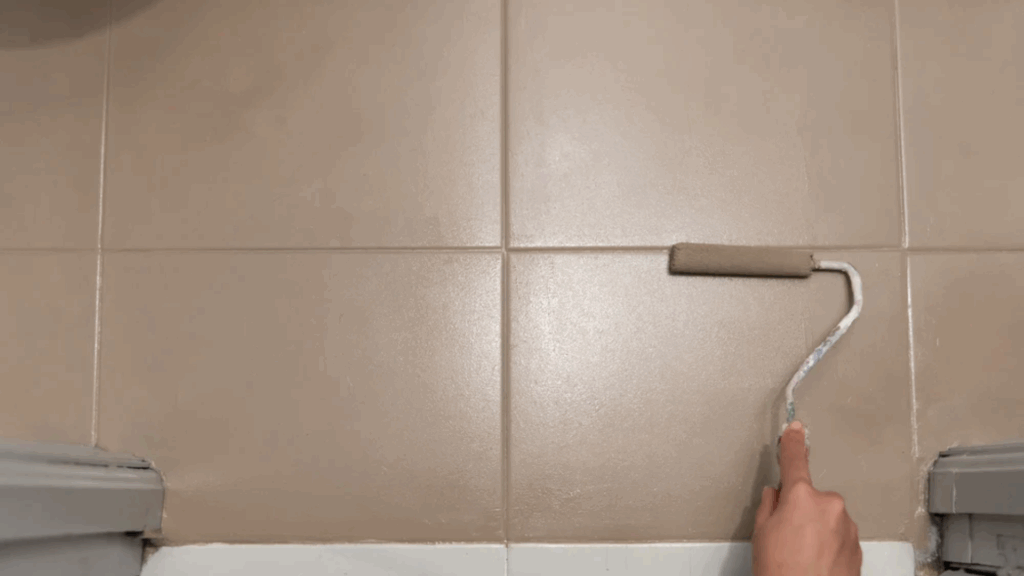If you’re wondering whether painting bathroom tiles is a good idea, you’re not alone.
Many people want to refresh their bathroom without spending a lot of money or time on replacing tiles.
The good news is, yes, you can paint bathroom tiles! But before you grab a paintbrush, there are a few things you should know.
Painting tiles isn’t as simple as just slapping on any paint. It requires the right tools, preparation, and a bit of patience.
In this guide, I’ll help you figure out if this DIY project is the right choice for you and explain the best way to go about it.
I’ll also cover some common challenges and whether it’s worth painting your tiles at all.
By the end, you’ll have a clear understanding of what to expect and how to achieve the best results.
Is It Possible to Paint Bathroom Tiles?

Yes, you can paint bathroom tiles, but it’s important to do it the right way.
With proper preparation and the right products, you can give your bathroom a fresh look without the cost and hassle of replacing tiles.
The best tiles to paint are ceramic, porcelain, and some natural stones. These materials are smooth and allow the paint to stick better.
Tile painting works best in areas that don’t get too much foot traffic. This includes places like bathroom walls and backsplashes.
You can also paint low-traffic floors, but keep in mind they may need more touch-ups over time due to wear and tear.
Before you start, be sure to clean and prime the tiles properly to ensure the paint lasts.
By following these simple steps, you can get a beautiful result that can completely update the look of your bathroom.
Pros and Cons of Painting Bathroom Tiles
Pros:
- Quick, affordable makeover.
- Wide range of color and finish options.
- Less disruptive than full tile replacement.
Cons:
- Painted surfaces may chip or wear over time, especially in high-moisture or high-traffic areas.
- Not suitable for all tile types or locations (e.g., inside showers, heavy-use floors).
- Requires ongoing maintenance and eventual touch-ups or recoating.
Key Considerations Before Painting Bathroom Tiles

Before you decide to paint your bathroom tiles, there are a few important things to consider to ensure the best results. These factors will help you understand what to expect and whether this project is right for you.
- Surface condition: Ensure the tiles are clean, dry, and free of cracks. A smooth, intact surface will help the paint stick properly and last longer.
- Moisture exposure: High humidity and constant water contact, such as inside showers, can affect the paint’s durability and adhesion over time.
- Long-term expectations: Remember, painted tiles are a temporary fix compared to replacing tiles. They may need touch-ups or recoating in the future.
How Long Does Painted Tile Last?

The lifespan of painted tiles depends on several factors, including bathroom humidity, foot traffic, and how well the tiles are maintained.
In general, painted tiles can last anywhere from 1 to 5 years before showing signs of wear, especially in areas exposed to moisture or heavy use.
The paint may begin to chip or fade over time, particularly in high-humidity areas like showers or around sinks.
Compared to newly installed tiles or tile replacement, painted tiles don’t offer the same durability.
New tiles can last for decades without needing repairs, whereas painted tiles will need occasional touch-ups and may eventually require recoating.
While painting is a more affordable option for a quick makeover, it’s not as long-lasting as installing new tiles.
When to Paint vs. Replace

When to Paint:
- Quick update: If your tiles are in decent condition but look outdated, painting is a fast, affordable way to refresh your space.
- Temporary solution: If you’re not planning to stay in the home long-term, painting is a good option for a temporary update.
- Budget-friendly: Painting is much cheaper than replacing tiles, making it ideal for those on a tight budget.
- Cosmetic change: When you just want a new color or finish without making significant changes to the tiles’ functionality.
When to Replace:
- Damaged tiles: If tiles are cracked, chipped, or badly damaged, replacement is the better option for long-term durability.
- Long-term solution: If you want something more permanent and are looking to avoid frequent touch-ups or recoating, new tiles are the way to go.
- High-traffic or high-moisture areas: For areas like showers or floors, replacing tiles is better for long-lasting durability.
- Improved functionality: New tiles offer better performance and are less prone to wear and tear compared to painted tiles.
Expert Tips for Long-Lasting Painted Tiles
For a long-lasting and durable painted tile finish, follow these expert tips:
- Proper Surface Preparation: Clean and dry tiles thoroughly to ensure better paint adhesion and durability.
- Use Tile-Specific Paint: Opt for paint designed for tiles, such as epoxy-based paint, for better results in high-moisture areas.
- Apply Thin Coats: Use multiple thin layers of paint for a more even and long-lasting finish.
- Seal After Painting: Apply a topcoat or grout sealer to protect the painted surface from moisture and wear.
- Avoid High-Traffic Areas: Limit painted tiles to low-traffic areas to minimize wear and reduce the need for frequent touch-ups.
Conclusion
If you’re considering painting your bathroom tiles, it can be a great option for a quick, budget-friendly update.
However, it’s important to remember that painted tiles are a temporary fix. They can last for a few years, but they may need touch-ups or recoating over time, especially in high-moisture areas.
If your tiles are in good shape and you’re looking for a cost-effective makeover, painting could be the right choice.
But if your tiles are damaged or you want something more permanent, replacing them might be a better investment.
Ultimately, it all comes down to how long you want the results to last and how much effort you’re willing to put into maintenance.
Frequently Asked Questions
How long does painted tile last in a bathroom?
Painted tiles typically last 1 to 5 years, depending on the humidity, traffic, and how well the paint is maintained. Areas exposed to moisture, like showers, may need more frequent touch-ups.
Can you paint grout lines, or should they be masked?
It’s best to mask the grout lines when painting tiles to avoid uneven coverage. Grout can absorb paint and affect the finish, so many people prefer leaving it unpainted for a cleaner look.
Is it safe to paint bathroom floor tiles?
Yes, you can paint bathroom floor tiles, but keep in mind that they will need to withstand more foot traffic. Using a durable, high-quality paint and applying a proper sealer is essential for longer-lasting results.
How do you maintain and clean painted tiles?
To maintain painted tiles, avoid harsh chemicals and clean them gently with non-abrasive cleaners. Regular cleaning will help prevent wear, but be ready for occasional touch-ups if needed.

